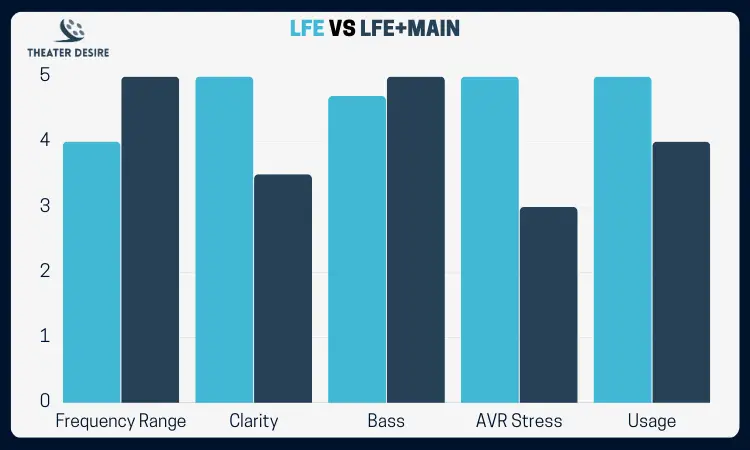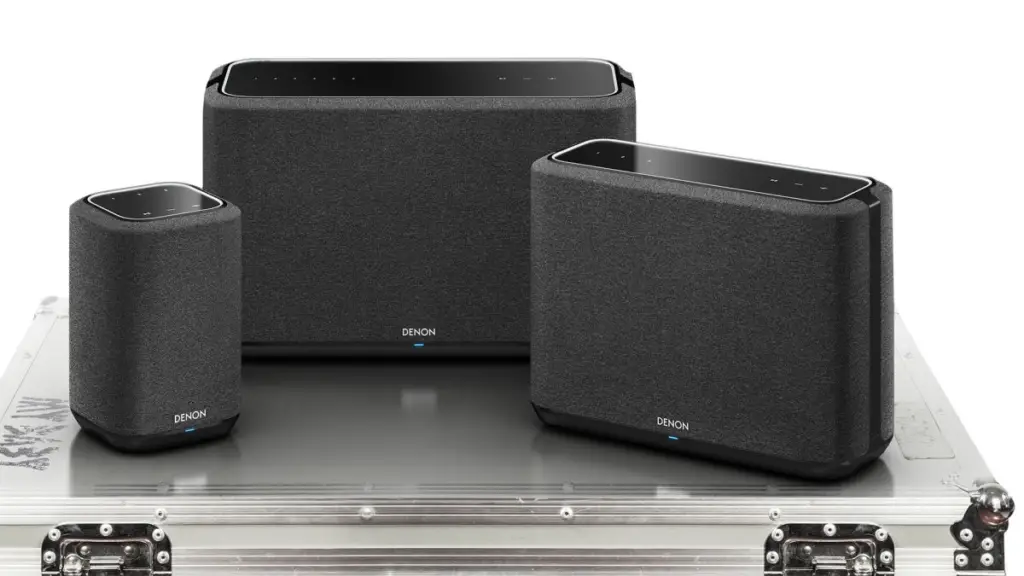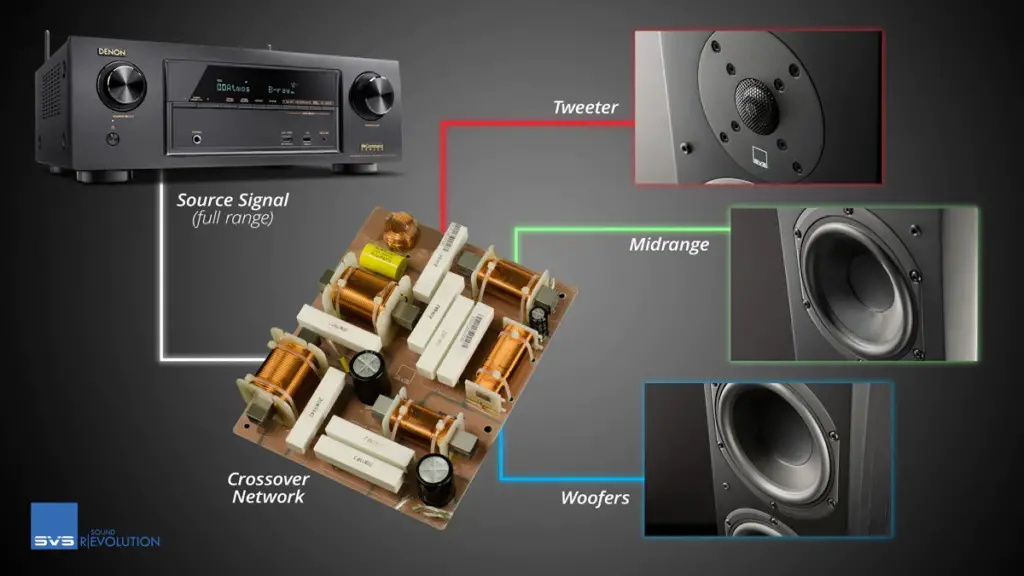If you got confused between two modes LFE and LFE+Main while setting up your home theater, you’re not the only one. This is a confusion most of us go through in the setup stage. So which would win when it comes to Denon LFE vs LFE+Main?
Denon LFE is the clear winner over LFE+Main in almost every stage. LFE gives you better AVR stress, Bass clarity, and versatile usage, whereas LFE+Main offers a more powerful bass and less clarity while placing more stress on AVR.
I know that’s not enough for you to make a decision. So, I’ll get deeper into the differences.
Denon LFE vs LFE+Main: Differences at a Glance
Regarding Denon, although LFE+Main has a full range compared to the limited range of LFE, it places higher pressure on AVC and takes away from the clarity. That’s the cost of the ‘double bass’ that comes with LFE+Main.
Unlike when it comes to Dirac vs Audessey vs Arc, LFE vs LFE+Main is a much more obscure comparison. That can make it more confusing, so I included a table summarizing all the differences for your convenience.
| Features | LFE | LFE+Main |
| Frequency Range | 30-120 Hz | Full Range |
| Usage | General Use | Direct Play |
| Bass | Standard | Double |
| AVR Stress | Low | High |
| Clarity | Clear & Detailed | Muddy |
Now, to make a more straightforward choice for you, I’ll make a visual representation of how I would rate the modes out of 5 based on the features.

Although it summarizes my findings, it’s not enough. So, I’ll delve into details to help you make a choice.
Denon LFE vs LFE+Main: In-Depth Comparison
Now comes the in-depth comparison; I’ll first talk about the usage of both modes.
Frequency Range:
LFE+Main has a full frequency range with no limits due to how the mode is set up, whereas LFE mode has a limitation of 30-120Hz.
The unhinged access to all frequencies of subs and speakers allows LFE+Main to have a full range of frequencies. However, LFE has a limitation of 30-120 Hz to optimize the listening experience of consumers.
So, the frequency range winner is LFE+Main, as it has full access.
Usage:
LFE mode plays the lower .1 frequency through subwoofers. .1 frequency refers to the bass, and as a result of routing bass only through subwoofers, it adds more fidelity to audio tracks.

On the other hand, LFE+Main allows all frequencies to play from all speakers and subs. That is helpful for music from the late 30s-40s as they did not support any separation between the
Ultimately, modern technologies like Pure Direct and stereo mode do the job just fine, so LFE+Main is redundant.
So, the winner in utility is LFE mode as that provides better fidelity and can support older tracks as well with Stereo Mode and Pure Direct.
Bass:
Bass is the selling point of LFE+Main; when it comes to pure bass, LFE+Main has roughly double the bass compared to LFE.
As LFE+Main mode routes bass to all of the speakers and subs instead of keeping it bound to the bass-specialized subs, bass increases. However, as a result, the quality of bass drops, and the separation of mid, low, and high bass becomes less prominent.
Contrary to that, LFE only exhibits only half as much in terms of bass compared to LFE+Main. The half bass, however, is routed only to subs. As subwoofers are specialized in the bass, the bass produced is boomy, clear, and distinct.
Regarding raw bass, LFE+Main is the winner as it is more powerful. However, LFE has better bass separation as well as details.
AVR Stress:
LFE+Main causes more AVR stress than LFE because of how it delivers the frequencies through all the subs and speakers.
LFE+Main places more stress on AVR because it plays .1 frequency all over the speaker and subs. Subsequently, that places pressure on the crossovers as well.

On the contrary, LFE plays frequencies other than .1 on speakers and .1 on the subs, which places less stress on the AVR and the crossover. Furthermore, less stress provides better durability for the speaker too.
If you want to relieve some of the burdens on the AVR of Denon speakers, try turning the Denon eco mode on.
The winner in the AVR stress department is LFE because it does not put much stress on the AVRs and crossovers.
Clarity:
LFE+Main loses clarity because of overblown bass all across the speakers and subs. It introduces muddiness. Contrarily, LFE mode does not face this issue at all.
In LFE+Main mode, the bass and other music details get muddy because of bass on speakers that aren’t specialized for it. On the other hand, in LFE mode, the whole system is more balanced, allowing for better clarity, details, and separation.
So, the winner in clarity is LFE over LFE+Main. That’s because LFE simply offers better balance and details compared to LFE+Main.
The Right Mode to Go For
As LFE has won in most aspects, I suggest you use LFE mode in your Denon speaker. LFE+Mode is helpful for analog music playing. However, that can be easily replicated with stereo or pure direct.
With that out of the way, I’ll now answer a few frequently asked questions before concluding the article.
Frequently Asked Questions (FAQs):
What is the best LFE level?
The best LFE level is from 0dB to -∞dB. However, that may be too strong for some listeners. So, if the bass is too strong for you, set it to -20dB to -∞dB. Adjust it like so if it still is too strong for you.
Should I use LFE on the subwoofer?
Yes, you should use LFE on the subwoofer. Not only does it optimize your listening experience, but it also enhances durability because it places less pressure on AVR compared to other modes.
What should be the crossover frequency level in LFE?
The crossover frequency level should be below 80hz in your home theater LFE setup. That allows for the best bass in any scenario. However, you may tweak those settings to your preference since not everyone likes their bass the same.
Conclusion
I hope this article helped you reach the decision when it comes to Denon LFE vs LFE+Main. So, which one did you decide to use on your daily driver? Let me know in the comments below.
Till then, so long!
